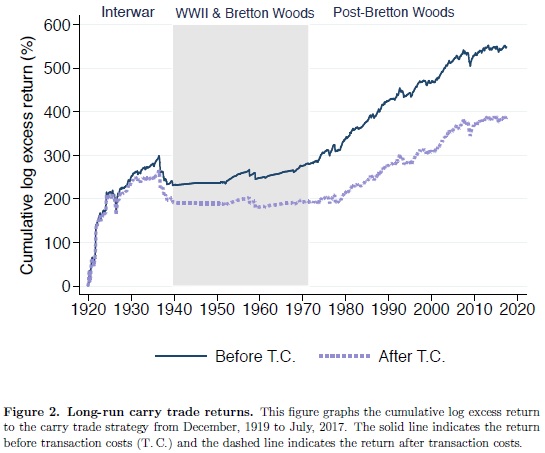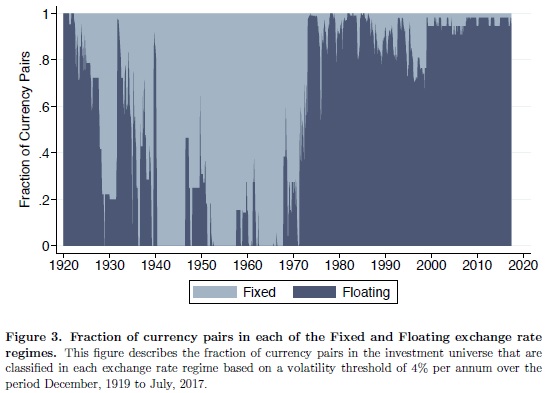Deep Learning Insights for Factor Investing
Deep learning is a very popular area of research and is used in a lot of industries. We link to a new paper which gives interesting insights about equity factor investing:
Authors: Messmer
Title: Deep Learning and the Cross-Section of Expected Returns
Link: https://papers.ssrn.com/sol3/papers.cfm?abstract_id=3081555
Abstract:
Deep learning is an active area of research in machine learning. I train deep feedforward neural networks (DFN) based on a set of 68 firm characteristics (FC) to predict the US cross-section of stock returns. After applying a network optimization strategy, I find that DFN long-short portfolios can generate attractive risk-adjusted returns compared to a linear benchmark. These findings underscore the importance of non-linear relationships among FC and expected returns. The results are robust to size, weighting schemes and portfolio cutoff points. Moreover, I show that price related FC, namely, short-term reversal and the twelve-months momentum, are among the main drivers of the return predictions. The majority of FC play a minor role in the variation of these predictions.
Notable quotations from the academic research paper:
"This study includes cross-sectional stock data from the CRSP/Compustat database from 1970-2014. In total I use 68 published FC, constructed based on accounting and market data. The focus of the analysis lies solely on large and mid cap stocks, to prevent a potential contamination arising from economically unimportant small and micro-cap stocks.
Training a deep neural network for stock picking, is at least partly motivated by a recent important contribution to the open source software community. The so called ”Tensorflow” library provides a highly scalable and flexible machine learning framework, allowing an efficient usage of DL networks and is the core implementation of Google’s artificial intelligence (AI), unit which is under active development. Moreover, the US cross-section of returns is a relative data rich environment. In this application, roughly 2.1 million observations provide a fertile ground for these parameter rich networks.
On the other hand, it is hard to assess ex-ante if these methods are suitable for predicting stock returns, due to the inherently different statistical character they possess — for example, the signal-to-noise ratio of a stock return process is a tiny fraction compared to the processes typically encountered in computer science.
The main contribution of this work lies in the investigation if recent developments in artificial intelligence are of any use predicting cross-sectional stock returns. Applying artificial neural networks (ANN) in finance is not new. Hence, past attempts have to be distinguished. This study can be seen as an extension to earlier attempts of applying ANN to predict stock returns, with the difference of having access to additional regularization techniques, better computational resources and more data. Additionally, it is, to best of my knowledge, the first study which investigates the cross-section and its relation to a rich set of published FC by exploiting a purely data-driven algorithm without any prior assumption on the functional relation between FC and expected return spreads.
Precisely, this paper aims at answering the following main three research questions: First, how can one efficiently employ a DFN framework for the purpose of return predictions? Second, do DFN based predictions add additional economic value compared to a parsimonious linear approach utilizing the same information set? Third, which set of FC drive the prediction results and how far do they differ from recent findings in the literature of FC selection.
The first question is related to the selection problem of the optimal DFN design for this exercise. I address this question by stating the problem as an outer optimization problem. This computational intensive task is tackled by utilizing a random search algorithm as proposed in Bergstra and Bengio (2012) in combination with a one-dimensional grid search for learning rate tuning. The procedure reveals that many network designs fail to deliver reasonable numerical behavior. Despite a relatively high failure rate, I identify architectures which show promising improvements compared to the linear benchmarks based on a validation data set.
The short answer whether economically measurable improvements can be achieved, is yes. I find significant and robust factor alpha ’s, which are consistently higher compared to the parsimonious linear benchmark. In many (but not in all) cases I document significant higher Sharpe Ratios (SR). No specification favors the linear model, irrespectively of which performance measure is considered. However, a naive strategy is sensitive to trading cost adjustments for both approaches. Nonetheless, I show that a simple rebalancing frequency adjustment leads to stark improvements. An explicit rebalancing optimization is not carried out and can be seen as a limitation of this work. Over the sample period, I document that DFN based portfolios perform much weaker during high volatility periods compared to times of calmer markets, a phenomena which is characteristical for momentum based strategies. Controlling for momentum exposure during these times, levels the alpha’s significantly into the positive domain.
The answer to the question which FC drive the predictions points unambiguously at price based information, predominantly short-term reversal (providing an explanation for the turnover intensity) and the twelve-months momentum. However, I study the impact purely by looking at prediction changes arising from variation in the input data. As a result, it can not be seen as a perfect measure, but a computational trivial way in gaining model insights at this stage.
"
Are you looking for more strategies to read about? Check http://quantpedia.com/Screener
Do you want to see performance of trading systems we described? Check http://quantpedia.com/Chart/Performance
Do you want to know more about us? Check http://quantpedia.com/Home/About










